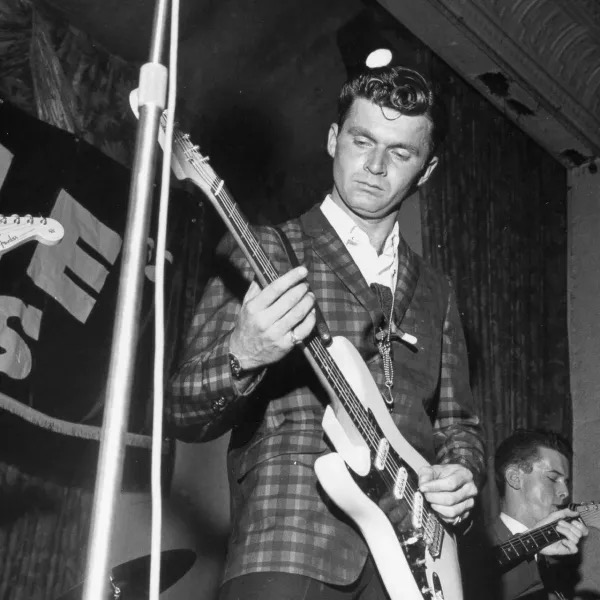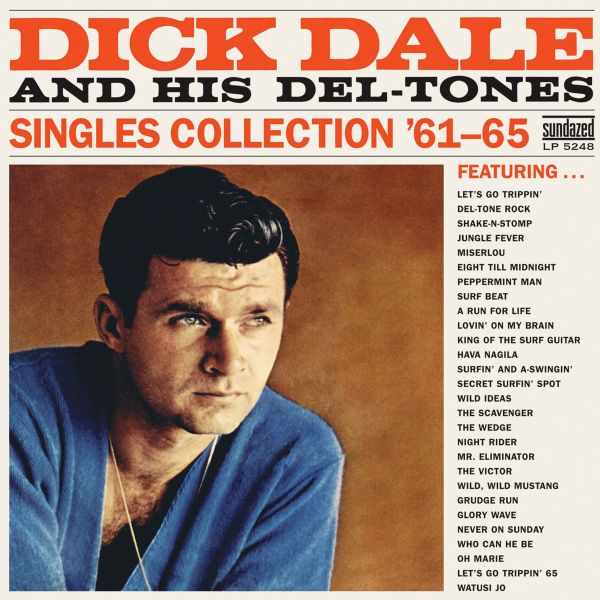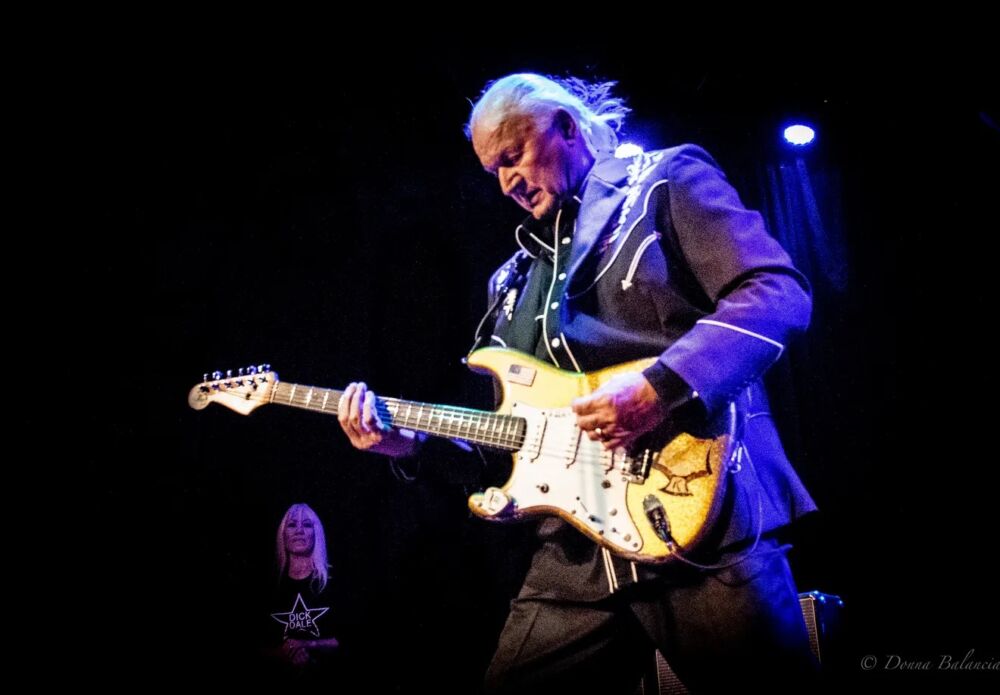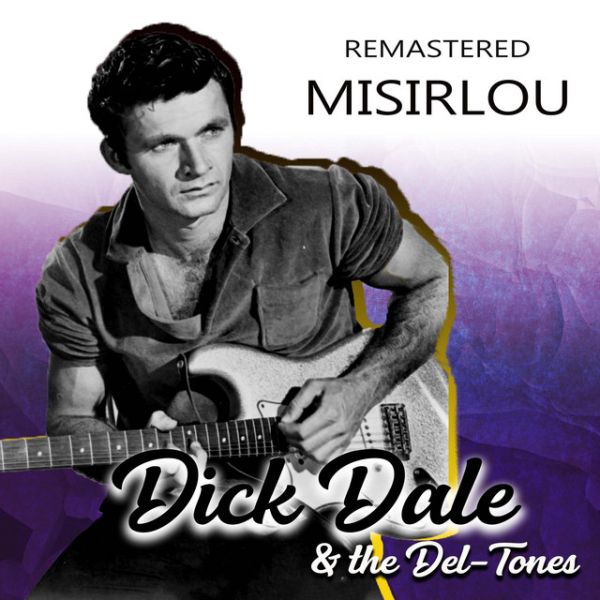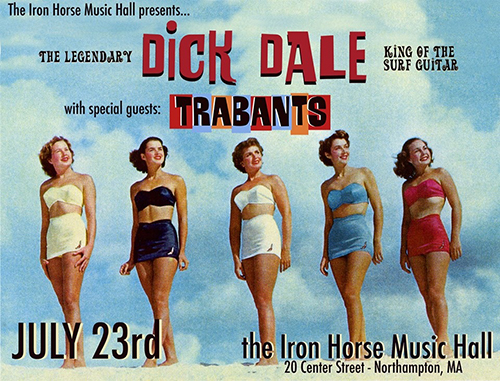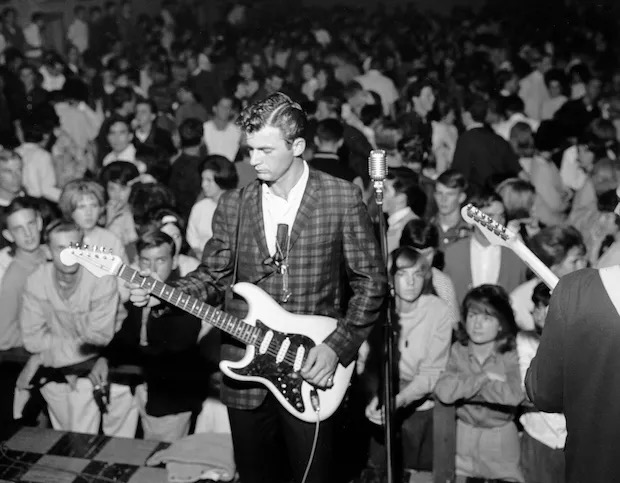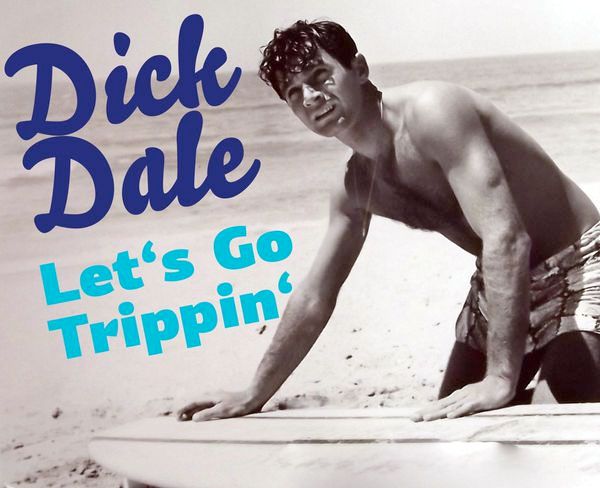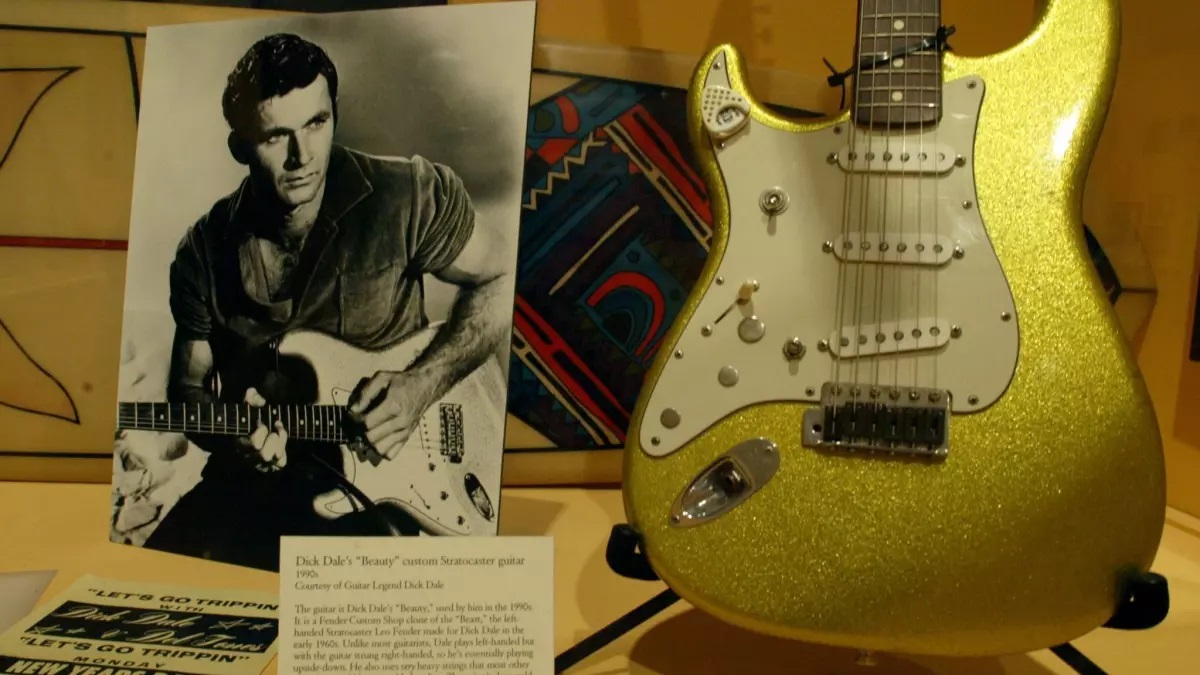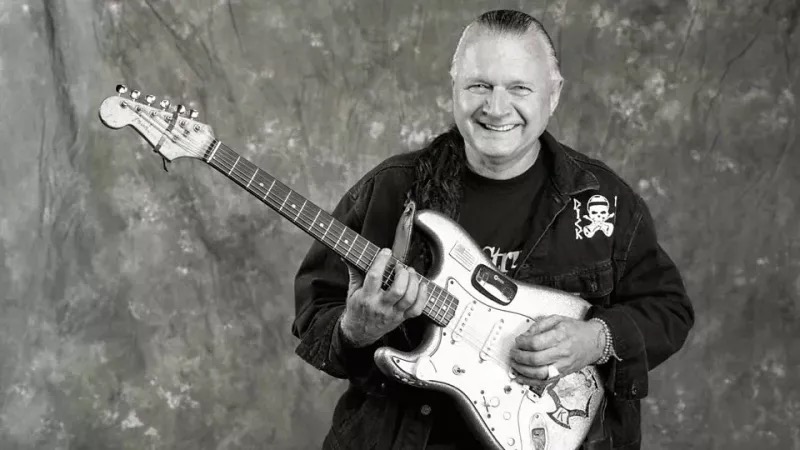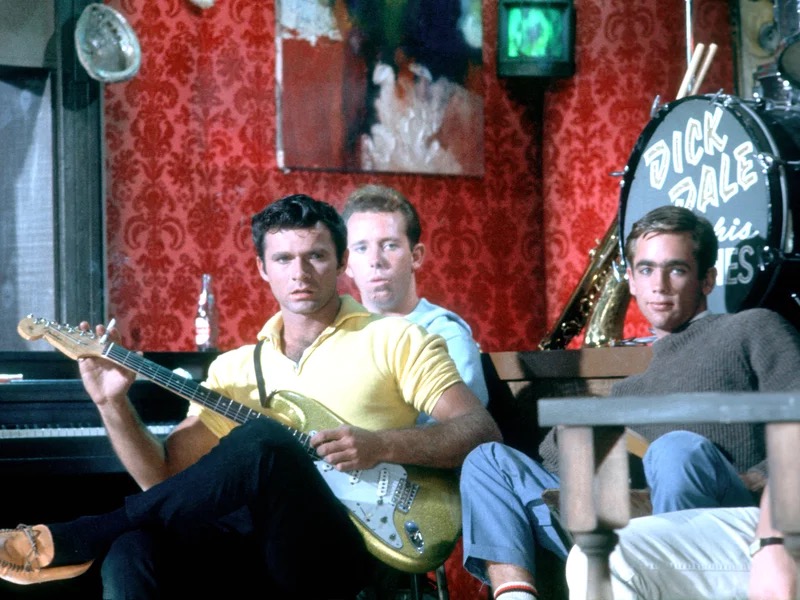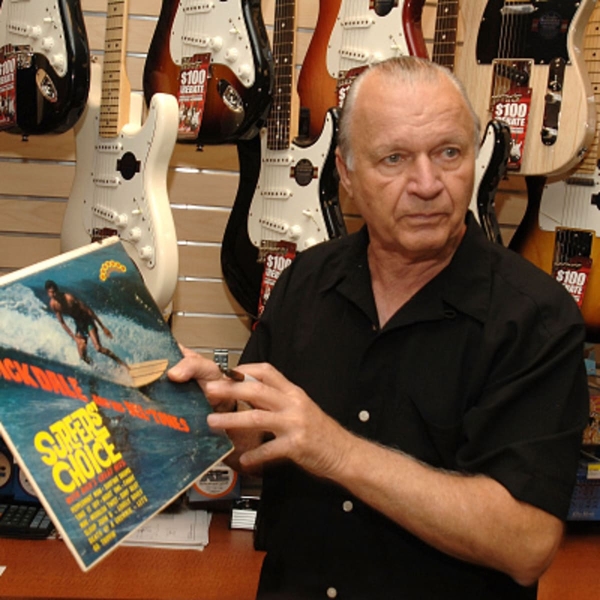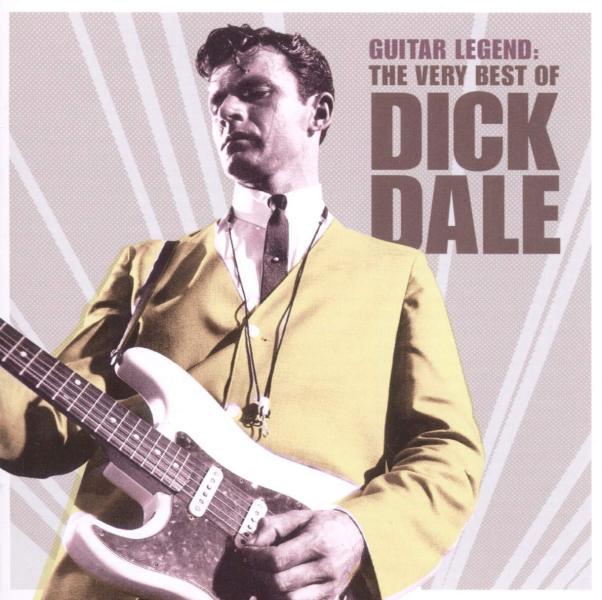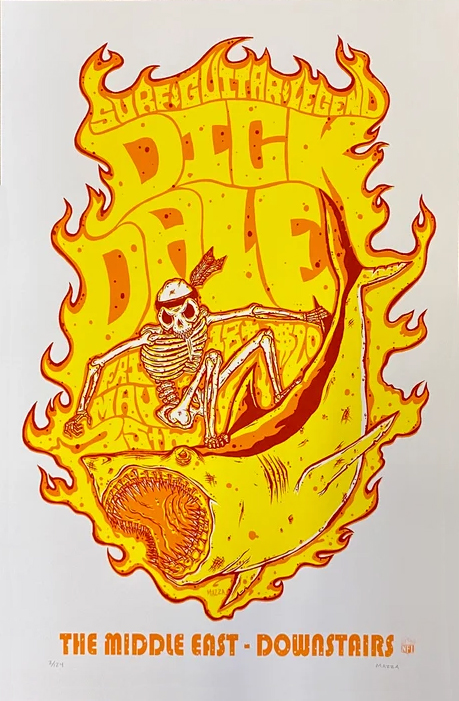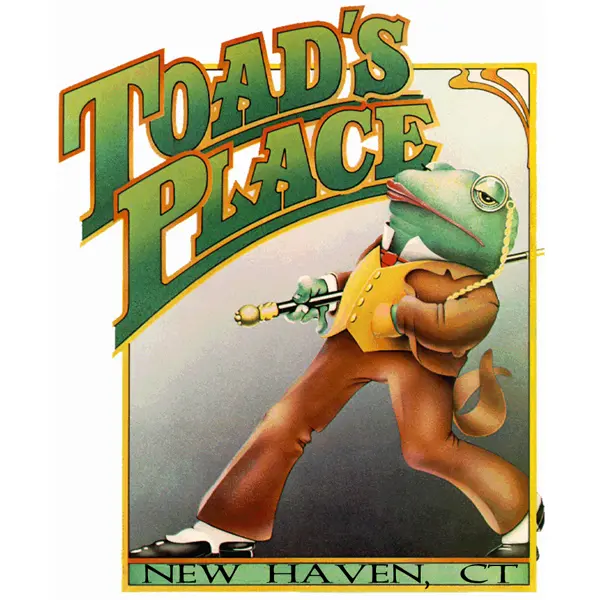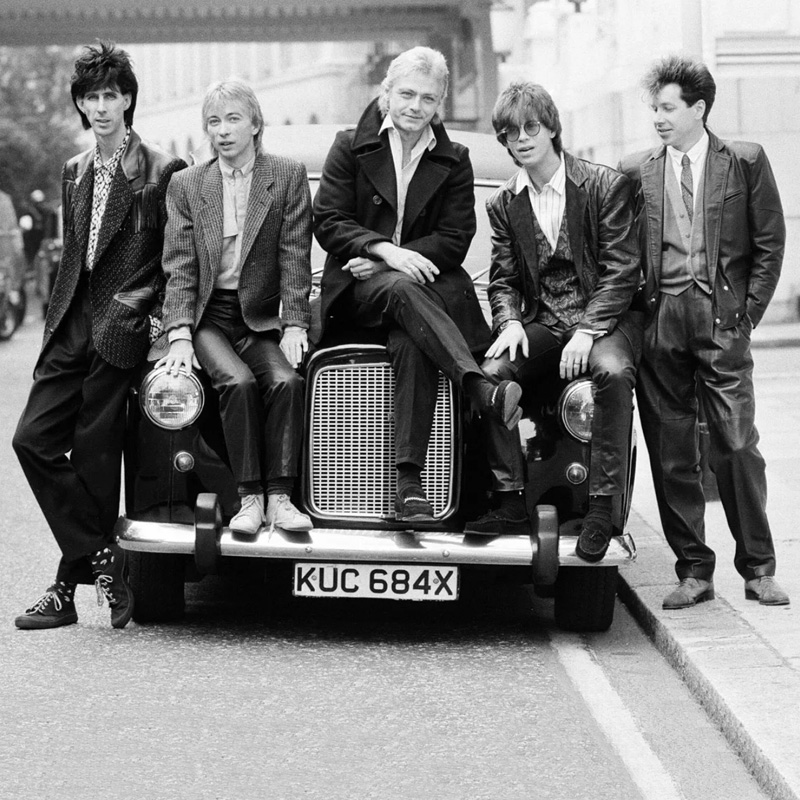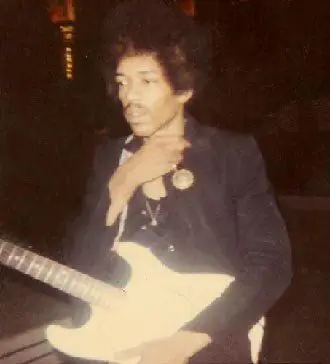Dick Dale
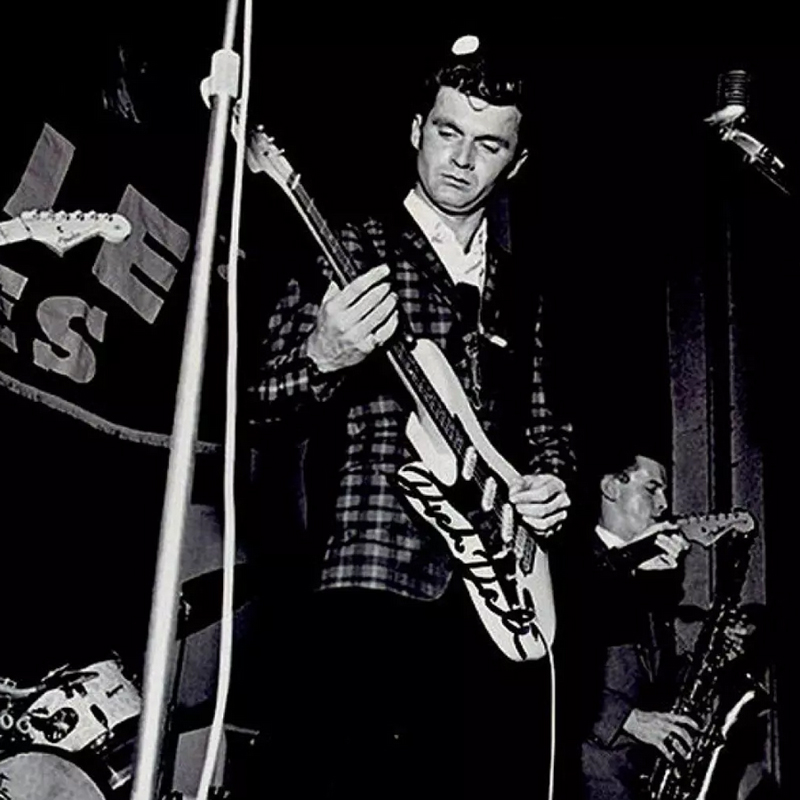
In what universe is it even remotely possible for a guy from Massachusetts to invent a thoroughly West Coast musical genre, become “The King of the Surf Guitar” and be credited as “one of the fathers of heavy metal”? Look no further than the life and legacy of the legendary Dick Dale.
Dale spearheaded the surf-music craze of the early ‘60s with his unprecedented blend of Middle Eastern scales, traditional Mexican rhythms and full-bore spring reverb to evoke the sound of crashing waves. In 1963, he established himself with panache as “The King of the Surf Guitar” by releasing an album of that name that included three originals and nine “surf-ified” covers – all instrumentals – and had an indelible influence on every future surf-music band including vocal groups like The Beach Boys, Jan and Dean and The Trashmen, all of whom included Dale’s tunes on their albums.
His impact didn’t stop at surf music, though. By the late ‘60s it had reached the polar-opposite extreme of the pop-music spectrum with rock-guitar luminaries like Jimi Hendrix, Pete Townshend and Brian May crediting Dale’s techniques as foundational to their own styles. By the mid-‘70s, the press was calling Dale “one of the fathers of heavy metal” because he introduced tremolo picking to rock music, a technique used as frequently in folk these days as it is in thrash and death metal. His rapid-fire, single-note staccato-picking style was virtually unmatched until younger guitarists like Eddie Van Halen took it to a new level in the late ‘70s and now the technique is considered rudimentary for top-tier rock and jazz-fusion players.
Musical beginnings
Born Richard Anthony Monsour in Boston in 1937, and raised in Quincy, Massachusetts, Dale grew up surrounded by “world music” decades before that was an actual musical category. His father’s ancestry was Lebanese, his mother’s was Polish-Belarusian and Dale started playing piano at age nine in addition to traditional instruments including the tarabaki (a goblet drum often used in Egyptian music) and the oud (a lute-type instrument common in the Middle East and North Africa).
He began playing trumpet at 13, then – inspired by Hank Williams’ music and particularly by his rendition of “Tennessee Waltz” – he fell in love with the ukulele at age 15 and guitar immediately thereafter. By age 17, Dale was an outstanding guitarist so it’s no surprised that in 2003 he was #31 in Rolling Stone’s “100 Greatest Guitarists of All Time.” A left-handed player like Jimi Hendrix, Paul McCartney and The Cars’ Elliot Easton, he learned both rhythm and lead, with his tarabaki skills having a major influence on the former – and being the foundation for every instrument he ever played, he once said – in terms of the alternate-picking technique he called “the pulsation.”
Move to California, becoming “Dick Dale”
In 1954, Dale moved with his family to El Segundo, California, where three things set the course for his adult life: first, he learned how to surf; second, with no experience playing live except for as a trumpeter with the Quincy High School orchestra, he began gigging at local country and rockabilly bars; third, a friend suggested he adopt the stage name “Dick Dale” because it “sounded cool for a country musician.” The two teens were unaware that a singer-saxophonist whose actual name was Dick Dale was a regular act on The Lawrence Welk Show, but the identical names never became an issue, legally or otherwise.
“Let’s Go Trippin’”, Surfer’s Choice, “Misirlou Twist,” Films
In 1961, he recorded the single “Let’s Go Trippin’” which is widely credited for launching the entire surf-music craze, both instrumental and vocal. It hit #4 in the Los Angeles station KFWB’s Most Requested list, peaked at #60 in the Billboard Hot 100 and was included on his first full-length album, 1962’s Surfer’s Choice, released on the Deltone label and picked up by Capitol for national distribution.
Dale’s debut also featured “Misirlou Twist,” his arrangement of a traditional Greek folk number that became his signature song, starting from when he played it on The Ed Sullivan Show in 1963 and in the film A Swingin’ Affair that same year. The song’s popularity resurged through the 1990s and 2000s after it was in the soundtrack for the 1994 film Pulp Fiction. Dale and his odes to all things surf were prominent in two other films, 1963’s Beach Party, in which he played “Secret Surfin’ Spot,” and 1964’s follow-up, Muscle Beach Party, in which he played “My First Love,” “Runnin’ Wild” and “Muscle Beach.” He released ten instrumental-surf albums between 1962 and 1969.
Fender Collaboration, Hiatus, The Tiger’s Loose, Grammy Nomination
In the early ‘60s, frustrated that his Fender amps were failing under the intense pressure of his playing, Dale worked closely with Leo Fender to develop much sturdier ones. The result was the invention of Fender’s Dual Showman, the world’s first big-stage rig, as detailed in a March 2022 article in Guitar Player magazine.
After staying out of the music business from 1979 to 1985 following a swimming injury that almost cost him a leg, Dale returned in 1986 with a boisterous album, The Tiger’s Loose. In 1987, he cut a single of the instrumental-surf classic “Pipeline” – a major landmark for the genre in 1962 when the original version by the Chantays hit #4 in the Billboard Hot 100 – and performed it in the film Back to the Beach with blues-rock guitar superstar Stevie Ray Vaughan, winning the pair a Grammy nomination for Best Rock Instrumental Performance.
1990s, 2000s, New England Appearances, Awards, Accolades
In the ‘90s, Dale recorded three more studio albums: Tribal Thunder (Hightone, 1993), Unknown Territory (Hightone, 1994) Calling Up Spirts (Beggars Banquet, 1996). In 2001, he self-released the LP Spacial Disorientation, in 2006 Rhino Records issued the 39-track anthology Better Shred Than Dead and in 2010 Sundazed Records re-released Rock Out with Dick Dale & His Del-Tones: Live at Ciro’s (recorded at the famed Hollywood club and originally issued by Capitol in 1965).
While touring throughout North America, the UK, Europe, Japan and Australia in the 1990s and 2000s, he appeared at a number of New England venues including the Iron Horse Music Hall in Northampton, The Middle East in Cambridge and Toad’s Place in New Haven. In 1996, Dale was inducted into the Hollywood Rock Walk of Fame and in 2000 the United States House of Representatives elected him to the Library of Congress Hall of Records for Outstanding Achievements in Music. In 2009, he was inducted into the Musicians Hall of Fame and Museum in Nashville and the Surfing Walk of Fame in Huntington Beach.
Death, Legacy
On March 16, 2019, Dale died at age 81. Always more drawn to playing live than recording, he had scheduled shows through November of that year.
Surf music’s chart-dominating years were brief since British Invasion groups began commandeering US charts in mid-1964, but Dale’s impact on pop music – not to mention on youth culture as a whole – was phenomenal. In addition to his being arguably the most technically gifted guitarist ever produced by the genre he almost single-handedly invented, throughout his entire life he was its most passionate purveyor. “There was a tremendous amount of power I felt while surfing and that feeling of power was simply transferred into my guitar,” he said in a 1962 interview.
(by D.S. Monahan)

